Private First Class Curtis Crawford Bryant
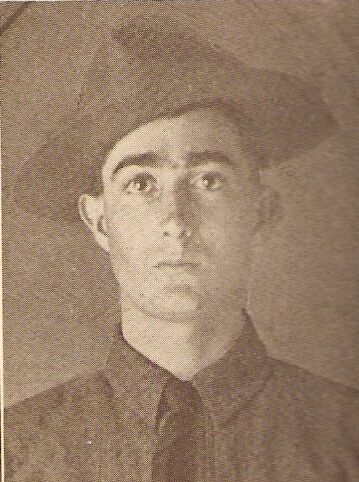
- Unit: 37th Division, 148th Infantry Regiment, Company A,
- Service Number: 1528541
- Date of Birth: August 9, 1893
- Entered the Military: July 14, 1917
- Date of Death: September 28, 1918
- Hometown: Ironton (Deering), Ohio
- Place of Death: Avocourt, France
- Cemetery: Plot C, Row 19, Grave 36. Meuse-Argonne American Cemetery, Romagne-Sous-Montfaucon, France
Collins Career and Technical Center (Chesapeake, Ohio)
2024/2025
Early Life
Curtis Bryant was born on August 9, 1893, in Coal Grove, Ohio, a suburb of Ironton. He was the son of Elmer Bryant, a farmer, and Elizabeth Bryant. Bryant had seven siblings: three sisters—Ethel, Bernice, and Hazel, and four brothers—Raymond, Elmer, Merritt, and Lester. His father experienced a significant tragedy earlier in life when he lost two young sisters, Sarah and Mary, in a fire in 1868. Bryant’s paternal grandparents were Epperson Bryant (1836-1911) and Cyrelda Bryant (1842-1916), and his maternal grandparents were David McKnight (1847-1888) and Mary Pollie Martin (1851-1926).
Bryant was reported as having attended school in the 1900 census. However, according to the 1910 census, he was no longer enrolled. His age at the time of the later census would have been approximately 16 years old. It is unclear what specific school he attended as a boy, but the area where he lived is part of the Coal Grove School District.
Before his military service, Bryant worked at a local sawmill called W.H. Dawkins. His draft card indicates that the business was in Ironton, Ohio, but records show it was across the river in Ashland, Kentucky. Bryant had not married or fathered any children before his enlistment at 23.

Homefront
Wartime Industry
During World War I, the community of Ironton, Ohio, played a crucial role in the war effort. Its strategic location near the Ohio River and well-developed railroad infrastructure made it an ideal hub for manufacturing and transporting essential goods.
Ironton was a key part of the Detroit, Toledo, and Ironton (DT&I) Railroad system, facilitating the transportation of iron and other essential materials. This system was critical to industries like Ford Motor Company, which relied on Ironton’s resources to manufacture wartime vehicles and equipment. After the war, Ford acquired the DT&I rail line, cementing the area’s importance in industrial transportation.
Community Efforts
The local Red Cross played a significant role in producing and donating bandages and medical supplies for soldiers. Volunteers, primarily women, worked in Red Cross sewing rooms and production centers to prepare these materials for shipment overseas.
The community also worked diligently to raise funds for the war effort by selling Liberty Bonds. The county met all five fundraising quotas set by the U.S. government and was the first in Ohio to reach the goal for the third drive. As a result, it earned an honor flag and a star, signifying that the community had exceeded the initial quota and made a remarkable contribution to the nation’s wartime financial goals.
Town Legacies
Ironton was also home to Captain William C. Lambert, a World War I fighter pilot credited with the second-highest air-to-air victories at the time.
In 1919, the city also saw the formation of one of the first semi-professional football teams in the country, the Ironton Tanks. This team helped lay the foundation for what would become the National Football League in 1922. Today, Tank Stadium remains in use by Ironton’s Fighting Tigers Football Team, serving as a lasting reminder of this unique chapter in the community’s history.
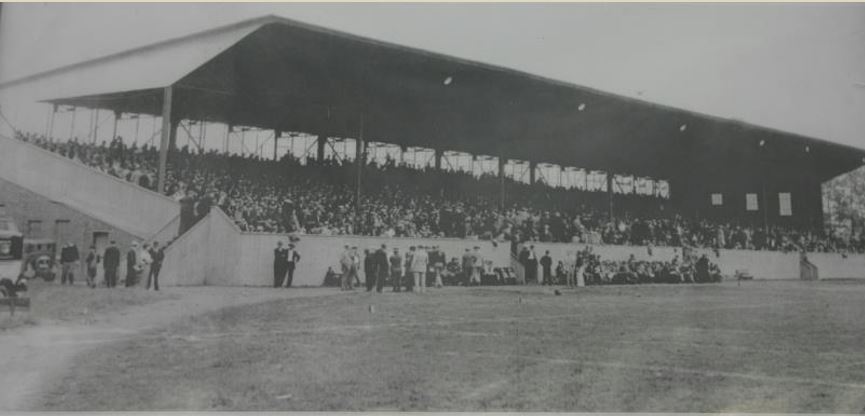

Military Experience
Early Training and Deployment
Bryant registered for the draft on June 5, 1917. He officially entered the service with the Ohio National Guard as a private with Company I, 7th Infantry Regiment. Company I began training with the National Guard on July 15, 1917, in Ironton, Ohio. The Lawrence Street School was transformed into barracks to house Bryant and the other recruits as they began training.
On October 16, 1917, Bryant and his comrades were transferred to Camp Sheridan in Montgomery, Alabama, when they were called up to serve with the United States Army. Bryant was assigned to Company A, 148th Infantry, 37th Division, also known as the “Buckeye Division.” They trained in Alabama until May of 1918, when they received orders to move to Fort Lee, Virginia, to prepare for deployment. On June 16, 1918, Bryant was promoted to private first class.
On June 23, 1918, Bryant boarded the USS Susquehanna in Newport News, Virginia, and set sail for Europe. The ship arrived in Brest, France, in July, and the men were loaded onto “40/8” boxcars, meaning they had the capacity for 40 men or eight horses, to a training area near the Meuse-Argonne region.
Baccarat Sector Engagement
Following intensive training, the 37th Division was sent to relieve another unit in the Vosges mountains of eastern France. While the Baccarat sector was relatively quiet compared to other sections of the front, because of its strategic location, it needed to be held at all times for security. Training with the French Army continued in this sector, and troops received their first experience of actual combat fire.
In August 1918, the 37th Division conducted two patrol raids, which earned them a commendation from General Duport of the French artillery. Each time, they penetrated German lines for over a kilometer to rescue prisoners without losing a single man.
Meuse-Argonne Offensive and Sacrifice
The 37th Division was then ordered by rail to the Meuse-Argonne front, approximately 90 miles northwest. Once the Meuse-Argonne Offensive was launched on September 26, 1918, the 37th Division played a significant role in the Allies’ decisive campaign. They demonstrated the increasing strength and effectiveness of American forces on the battlefield.
On September 27, 1918, Bryant’s unit was moving to secure the forest when he was shot and killed near Avocourt, France. He was buried in a temporary grave the next day.
The offensive continued until November 11, 1918, when Germany’s resources and morale were critically depleted, and an Armistice was called.
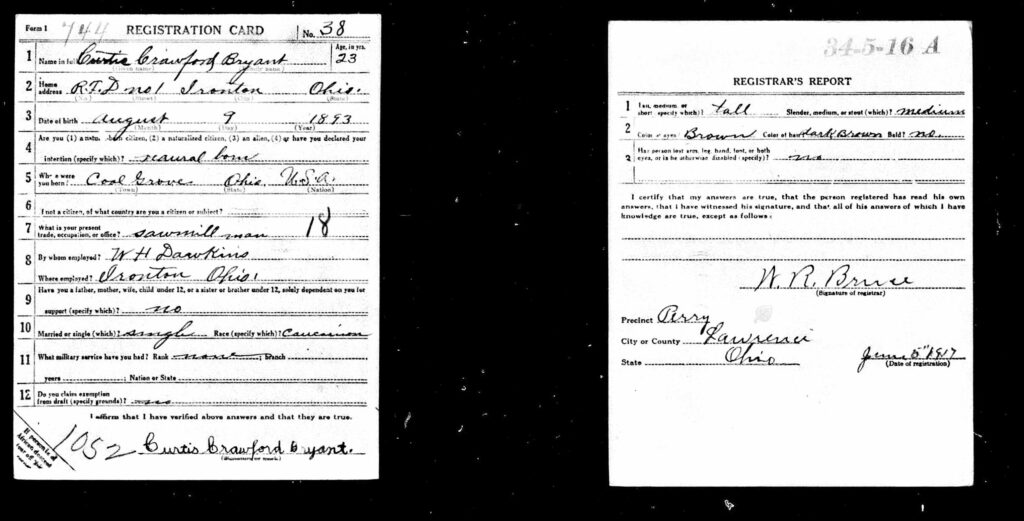
Commemoration
When the rest of his unit returned from the war and mustered out, Bryant’s father wrote a letter, dated June 6, 1919, pleading with the government to locate his son’s remains. It is unclear whether he was aware that his son had been killed during the war or if he found out only after the other soldiers from the area had returned home. He received an official reply on October 9, 1919, explaining that Bryant’s remains had been found and reinterred in the Meuse-Argonne American Cemetery. His body was moved from one location in the cemetery (mentioned in the October 9 correspondence) to his final resting place on January 14, 1922.
On March 22, 1925, the local school districts near Coal Grove built a new building and renamed the school district Dawson-Bryant in honor of two of their native sons who died during World War I. Bryant’s father passed away just a month after the honor was bestowed upon his son, on April 28, 1925.
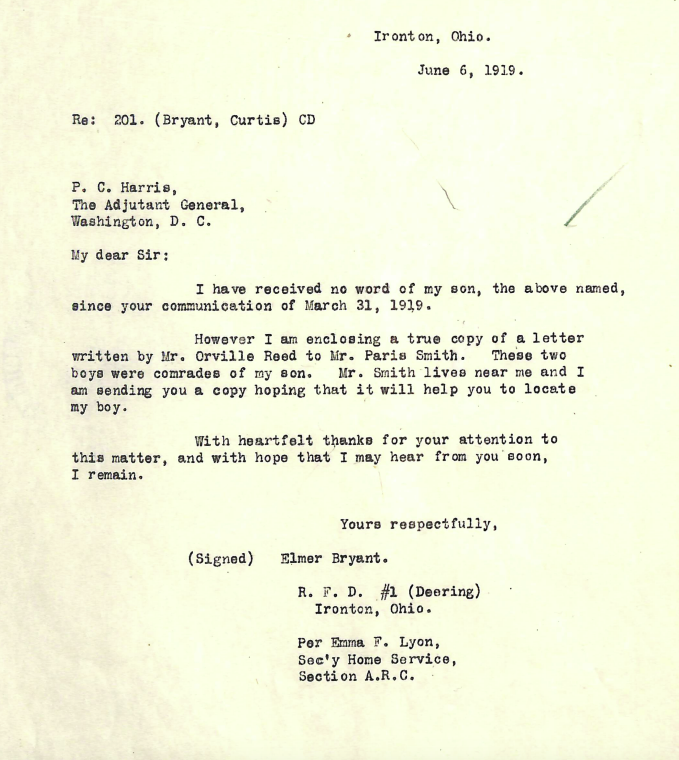
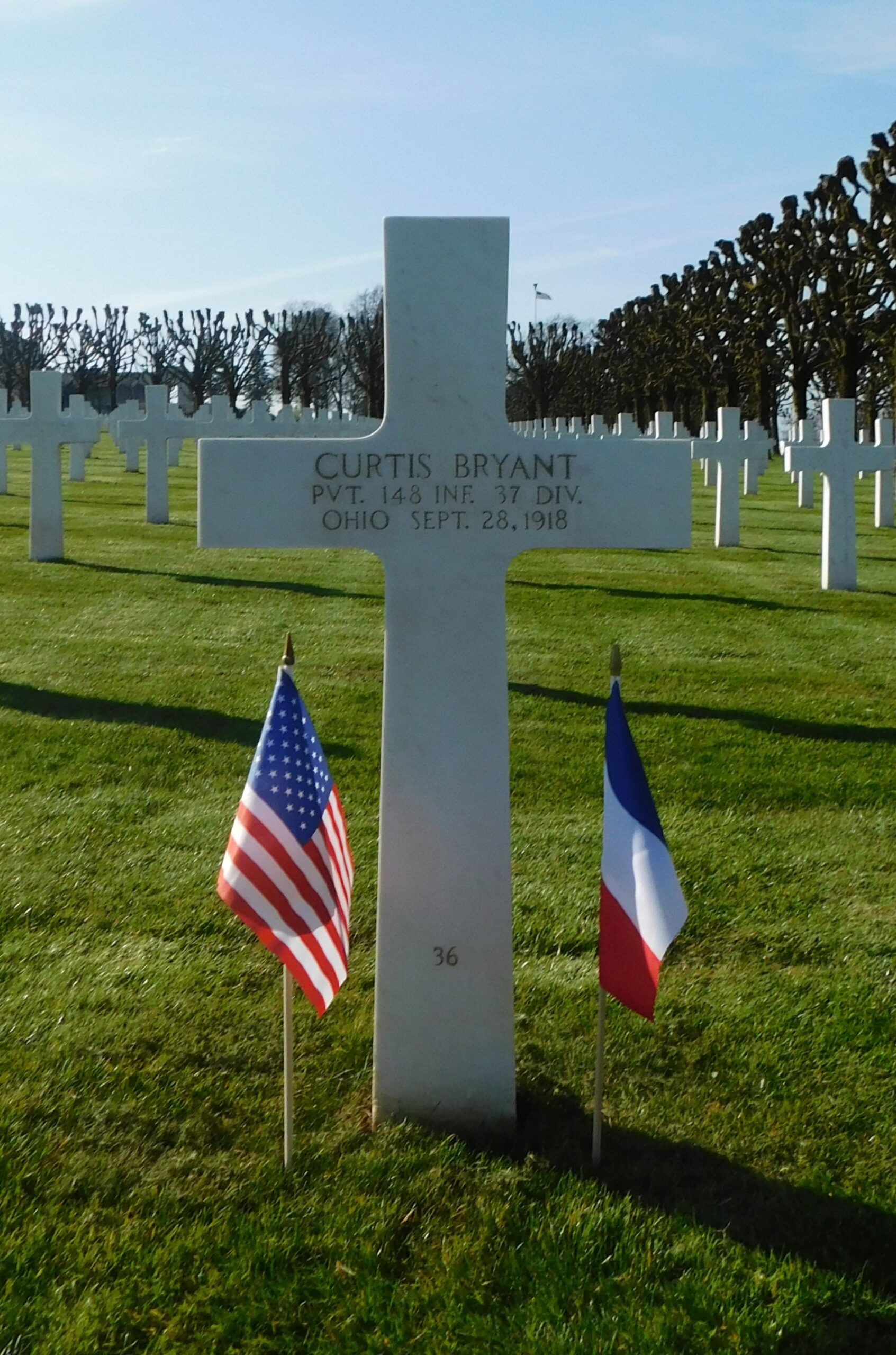
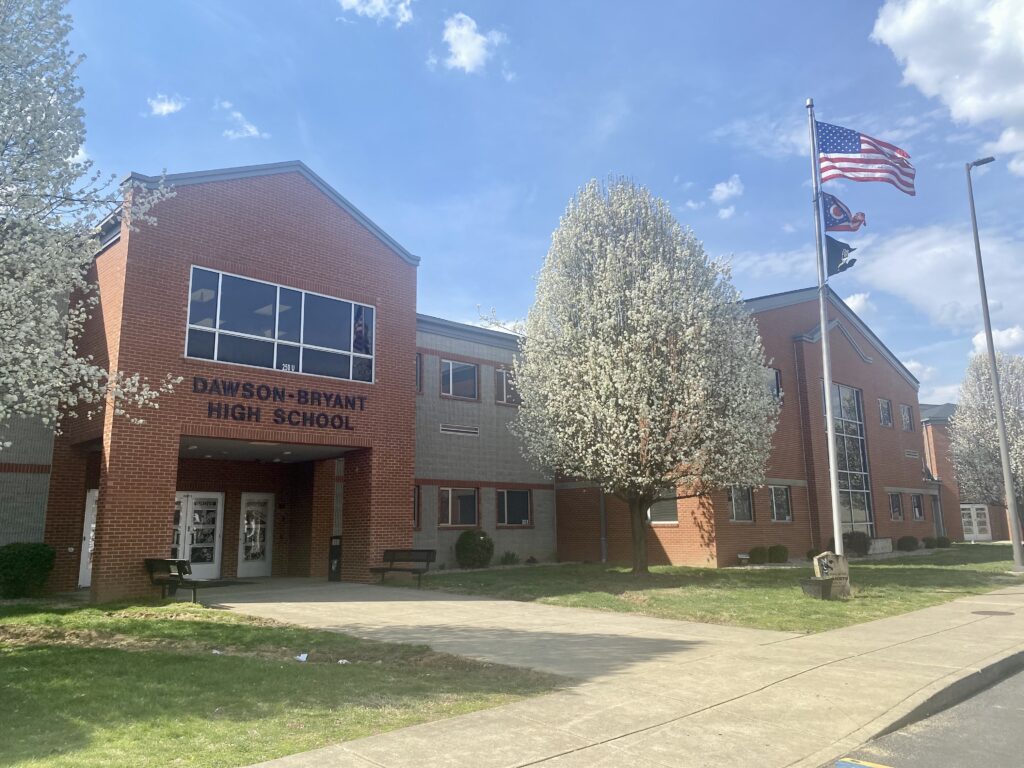
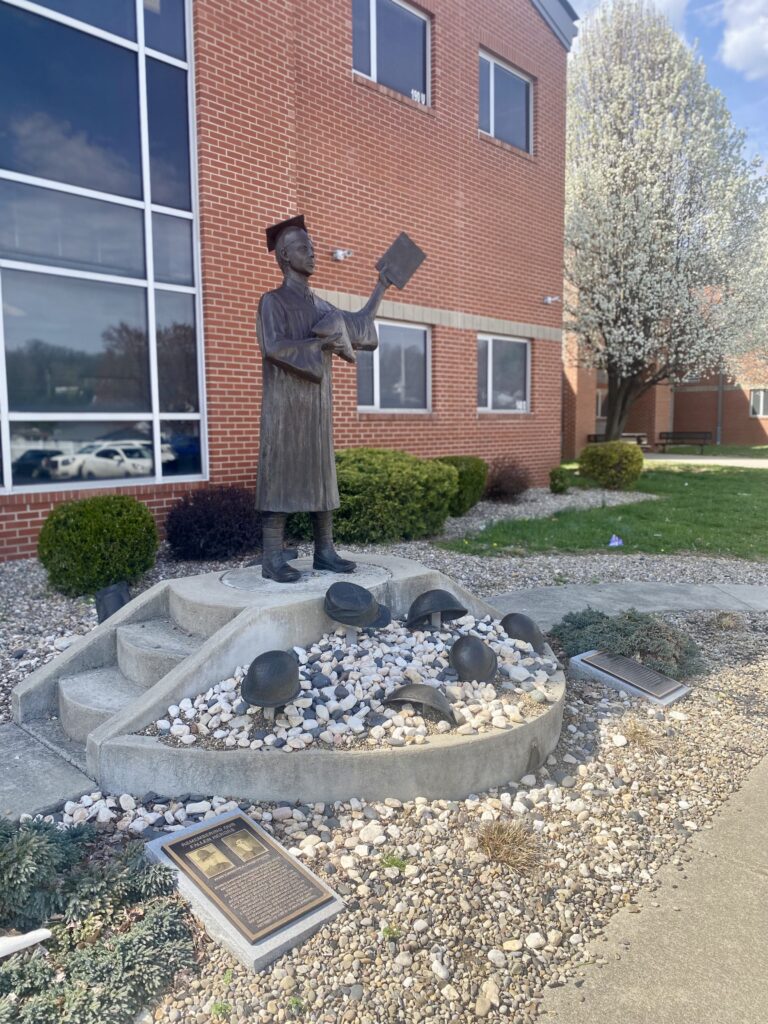
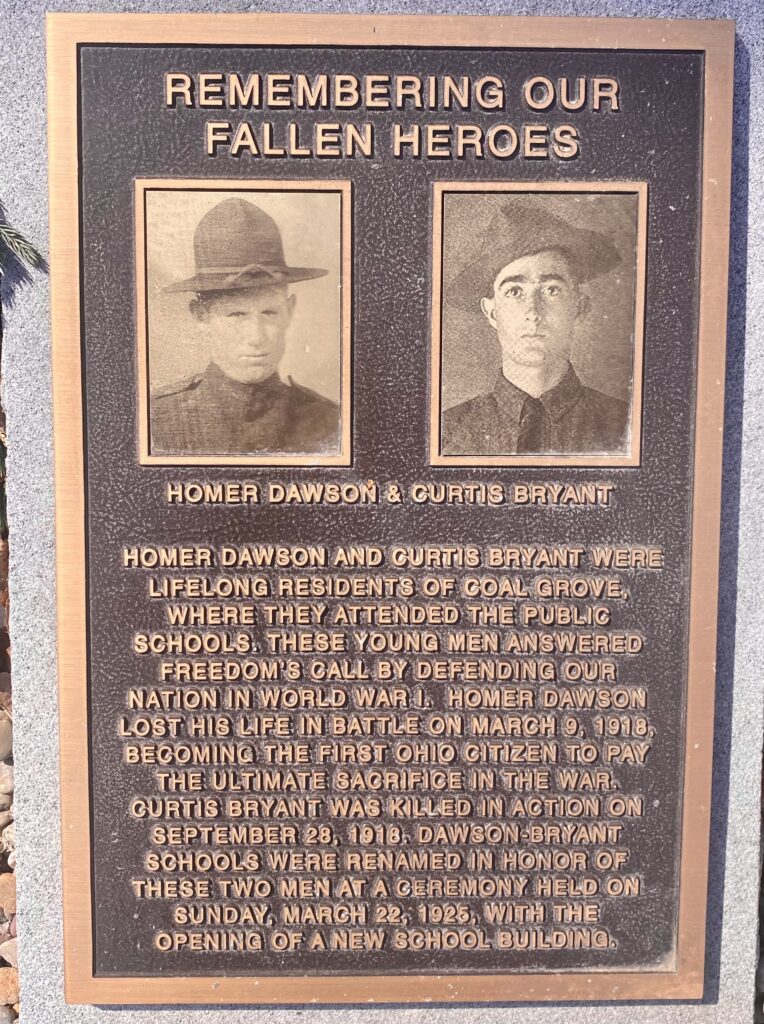
Bibliography
Primary Sources
Capt. William Lambert. Photograph, U.S. Air Force, National Museum of the United States Air Force. Accessed April 13, 2025. https://media.defense.gov/2005/Dec/27/2000573654/-1/-1/0/050405-F-1234P-060.JPG.
“Company I Will Enter Federal Service Today; To Go To Camp Soon.” The Irontonian [Ironton, OH], July 15, 1917.
Curtis Bryant. Burial Case File. National Archives and Records Administration – St. Louis.
Detroit, Toledo, & Ironton Railroad Train in Ironton, Ohio, 1923. Photograph. December 26, 1923. The Henry Ford Museum (237026). https://www.thehenryford.org/collections-and-research/digital-collections/artifact/237026/.
Miller, Ernest R. Honor Roll of Ohio: Lawrence County Edition.
Ohio. Lawrence County. 1900 U.S. Census. Digital images. https://ancestry.com.
Ohio. Lawrence County. 1910 U.S. Census. Digital images. https://ancestry.com.
“Ohio Troops Go To To [sic] Montgomery, Ala.” The Irontonian [Ironton, OH], July 15, 1918.
Remembering the Ironton Tanks. Photograph. Gridiron Legends of Ironton, Ohio. Accessed April 13, 2025. https://irontongridironlegends.wordpress.com/2019/09/01/remembering-the-ironton-tanks/.
Sackett & Wilhelms Corp. Ring it again Buy U.S. Gov’t Bonds, Third Liberty Loan. 1917. Poster. Library of Congress (2001699914). https://www.loc.gov/item/2001699914/.
Secondary Sources
“The 147th Infantry, 37th ‘Buckeye’ Division.” Doughboy Center. Accessed February 22, 2025. http://www.worldwar1.com/dbc/147thinf.htm.
“Coal Grove teacher, students uncover history.” The Ironton Tribune, March 1, 2013. https://www.irontontribune.com/2013/03/01/coal-grove-teacher-students-uncover-history/.
Cole, Ralph D. The Thirty-Seventh Division in The World War 1917-1918. The Thirty Seventh Division Veterans Association, 1926.
“Curtis C. Bryant.” American Battle Monuments Commission. Accessed December 28, 2024. https://weremember.abmc.gov/#!/details?id=38171.
“Eighty-Five Lawrence County Ohio Men Sleep In Heroes’ Graves.” The Ironton Tribune [Ironton, OH], July 4, 1976. https://lawrencecountyohio.com/military/veterans-world-war1/#google_vignette.
“Lawrence County’s Furnace History.” The Ironton Tribune [Ironton, OH], September 26, 2010. https://www.irontontribune.com/2010/09/26/lawrence-county%E2%80%99s-furnace-history/.
“Pvt. Curtis Bryant.” Find a Grave. Updated August 5, 2010. Accessed December 28, 2024. https://www.findagrave.com/memorial/55962101/curtis-crawford-bryant.
“Small city, big contribution: Ironton, Ohio, and the Great War.” The United States World War I Centennial Commission. Accessed December 23, 2024. https://www.worldwar1centennial.org/index.php.
Unger, Joe. 2019. “Small City, Big Contribution: Ironton, Ohio, and the Great War.” Roads to the Great War Blog. July 10, 2019. http://roadstothegreatwar-ww1.blogspot.com/2019/07/small-city-big-contribution-ironton.html.
“World War I Veterans.” The Lawrence Register. Accessed December 23, 2024. https://lawrencecountyohio.com/.
This profile was researched and created through the Researching Silent Heroes program, sponsored by the American Battle Monuments Commission.

